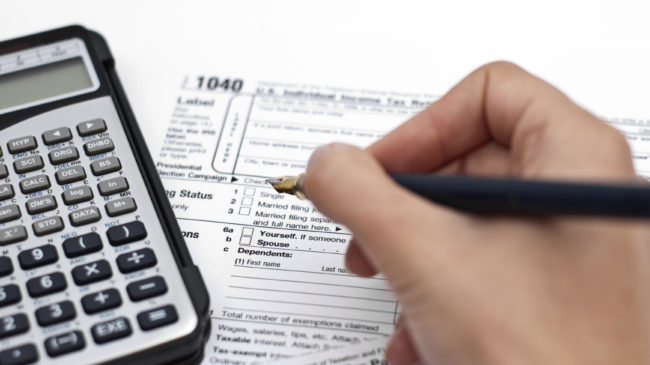Presumptive Democratic Party presidential nominee Joe Biden has plans to raise more revenue if he wins in November, but his proposals are far less aggressive than those offered by his former primary rivals Sens. Elizabeth Warren (D-Mass.) and Bernie Sanders (I-Vt.). Yet, like his erstwhile primary opponents, Biden’s proposals are not likely to raise enough revenue to match his ambitious spending plans — an imbalance that may not be sustainable in the likely tough fiscal conditions of 2021.
During the primary campaign, both Warren and Sanders proposed new taxes on wealth and financial transactions. Although the wealth tax would have fallen on relatively few rich individuals, it could have triggered out-migration and a loss of income tax receipts from these taxpayers — as France found before it abolished its own wealth tax in 2017. Fortunately, Biden has not shown interest in wealth taxation.
The former vice president has spoken favorably about a financial transactions tax — a small levy imposed every time stocks and bonds are sold — but it has not appeared in any of his written proposals, including the recommendations recently published by the Biden-Sanders unity task force. Also wisely missing from Biden’s task force proposal was Sanders’s idea of raising marginal income tax rates on high-income taxpayers from today’s 37 percent level to as high as 52 percent.
Although they may not face wealth taxes or 1970s-era marginal tax rates under a Biden administration, the wealthy would not come away unscathed. Biden has an array of suggestions that would make the tax system more progressive and more lucrative for the federal government.
Biden would eliminate certain tax deductions and would tax investment income at the same rate as labor income. Many economists believe that a combination of relatively low tax rates and less complexity is the best way to maximize revenues while minimizing disruption. With all — or almost all — economic activities receiving the same tax treatment, companies and individuals could focus less on the tax effects of their actions and more on their intrinsic costs and benefits.
While proponents argue that lower capital gains tax rates spur risk-taking and entrepreneurship, it is less clear that they boost GDP. A 1986 tax reform synchronized rates on capital gains and ordinary income, but growth continued for the remainder of the 1980s. Syracuse University economist Leonard Burman found no significant correlation between maximum capital gains tax rates and gross domestic product (GDP) growth during the period 1950-2011.
Biden has also proposed to increase the corporate tax rate from 21 percent to 28 percent — halving the rate reduction provided by the 2017 tax reform law. This move would probably raise only a limited amount of revenue: Annual corporate tax collections fell only $92 billion when the rate was slashed, and then recovered by $26 billion in fiscal year 2019.
The former vice president also wants to impose Social Security taxes on incomes above $400,000 per year. This combined employer/employee levy of 12.4 percent would come on top of a 39.6 percent income tax (as Biden would reverse the reduction to 37 percent in the 2017 law) and state income taxes that range up to 13.3 percent in California. That combined tax burden may trigger a search for alternatives to cash compensation for highly compensated executives — just as employers turned to nontaxable fringe benefits during the high tax 1950s, 1960s, and 1970s.
Overall, Biden’s tax proposals are projected to raise $3.2 trillion over 10 years by the Tax Foundation and $4.0 trillion by the Tax Policy Center. But even the high-end estimate is well below the total cost of his health care, climate change, infrastructure, education and other spending plans, which total $6 trillion over 10 years.
Biden’s plan — coupled with the Trump administration piling up massive debt — invites the question of whether our pandemic-shrunken economy can afford much more federal borrowing.
After the largest spending bill in history, the national debt is now over $26.5 trillion. The Congressional Budget Office’s (CBO’s) latest projection calls for a $3.7 trillion federal budget deficit this year — which doesn’t include the Senate potentially taking up another stimulus bill — and a $2.1 trillion deficit in fiscal year 2021. So, like President Obama in 2009, if elected, a President Biden could be entering office with big spending plans at a time he’s inheriting record deficits and a recession.
Right now, no one seems worried by massive deficits nor the money printing and inflation risk it brings. But, in June, consumer prices rose 0.6 percent, offsetting much of the deflation we saw in March through May. By 2021, we may already be facing an inflationary pattern and thus reduced tolerance for unfinanced spending. If that’s the case, Biden may be tempted to turn to tax-raising ideas from Sanders and Warren, or he could decide the economy is too weak to raise taxes.
As President Barack Obama put it in 2009, “The last thing you want to do is raise taxes in the middle of a recession.”
A version of this column first appeared in The Hill.

